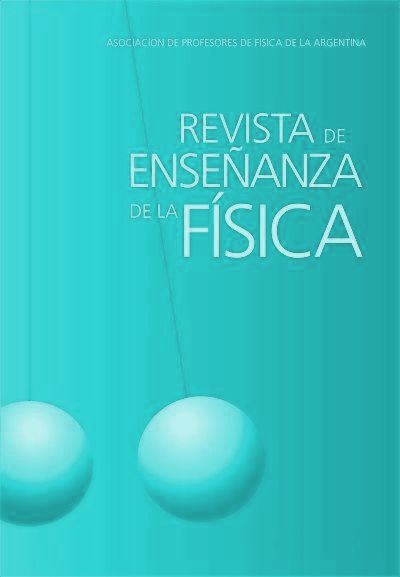Study of the voltage induction of the electromagnetic fields of a TL in industrial pipelines using a didactic simulator
DOI:
https://doi.org/10.55767/2451.6007.v32.n1.28942Keywords:
Electric field; Magnetic field; Transmission lines; MATLAB GUIDE; Computational simulationAbstract
Large structures used in the oil and gas industry, such as pipelines, when they are near high voltage transmission lines (TL) in steady-state undergo electromagnetic induction because of the interactions of the electromagnetic fields of the charged lines and consequently induced currents can cause damage human beings in contact with these pipelines. This work makes a study of the voltages and currents induced in an industrial pipeline by a TL through the development of a didactic simulator made using the MATLAB GUIDE, which facilitates the user’s learning through the display of three-dimensional graphics. The results of the TL-industrial pipeline system, got from real data from industrial companies, calculated in the simulations were compared with standardized values of IEC TS 60479-1:2005. According to these results, the voltage and current because of the capacitive cou-pling between a metallic pipeline and a TL is high and a current greater than the limits allowed for the safety of people is ob-tained. Regarding the inductive coupling between the system composed by the TL and the pipeline, this coupling induces danger-ous currents to the safety of people in contact with the pipeline. The mitigation carried out on the currents induced in the pipe-lines is possible through grounding resistances. Therefore, the study of voltages and currents induced in industrial pipelines by electric and magnetic fields of a TL, which involves equations and concepts difficult to assimilate, due to its theoretical charac-ter, becomes easy to learn through the use of the didactic simulator developed.
References
Bortels L. et al. (2006). A General Applicable Model for AC Predictive and Mitigation Techniques for Pipeline Net-works Influenced by HV Power Lines. IEEE Transactions on Power Delivery, 21(1), 210-217.
CIGRÉ. (1995). Guide on the influence of high voltage ac power systems on metallic pipelines. Consejo Internacional de Grandes Redes Eléctricas.
de Moura, A. P., de Moura, A. A. F., da Rocha, E. P. (2019). Transmissão de energia elétrica em corrente alternada. For-taleza-Brasil: Editora da Universidade Federal do Ceará.
de Moura, A. P., de Moura, A. A. F., Lemos, H. T. Q., da Rocha, E. P., Brandão Aguiar, V. de P. (2019). Simulador didático para análise de campos elétricos e magnéticos de linhas de transmissão de circuitos duplos. Revista de Enseñanza de la Física, 31(2), 71-82.
IEC TS 60479-1. (2005). Effects of current on human beings and livestock – Part 1: General aspects, Publication CEI/IEC/TS 60479-1. International Electrotechnical Commission.
Johnk, C. T. A. (1988). Engineering Electromagnetic Fields and Waves. USA: John Wiley & Sons.
Malik, N. H. (1989). A Review of the Charge Simulation Method and its Applications. IEEE Transactions on Electrical Insulation, 24, 3-20.
Notaros, B. M. (2017). Electromagnetics. Boca Raton: CRC Press.
Sadiku, M. N. O. (2012). Elementos de Eletromagnetismo 5ª. Edição. USA: Bookman.
Downloads
Published
Issue
Section
License

This work is licensed under a Creative Commons Attribution-NonCommercial-NoDerivatives 4.0 International License.
Aquellos autores/as que tengan publicaciones con esta revista, aceptan los términos siguientes:Los autores/as conservarán sus derechos de copiar y redistribuir el material, bajo los términos estipulados en la Licencia de reconocimiento, no comercial, sin obras derivadas de Creative Commons que permite a terceros compartir la obra bajo las siguientes condiciones:
- Reconocimiento — Debe reconocer adecuadamente la autoría, proporcionar un enlace a la licencia e indicar si se han realizado cambios. Puede hacerlo de cualquier manera razonable, pero no de una manera que sugiera que tiene el apoyo del licenciador o lo recibe por el uso que hace.
- NoComercial — No puede utilizar el material para una finalidad comercial.
- SinObraDerivada — Si remezcla, transforma o crea a partir del material, no puede difundir el material modificado.
- Los autores/as podrán adoptar otros acuerdos de licencia no exclusiva de distribución de la versión de la obra publicada (p. ej.: depositarla en un archivo telemático institucional o publicarla en un volumen monográfico) siempre que se indique la publicación inicial en esta revista.
- Se permite y recomienda a los autores/as difundir su obra a través de Internet (p. ej.: en archivos telemáticos institucionales o en su página web) antes y durante el proceso de envío, lo cual puede producir intercambios interesantes y aumentar las citas de la obra publicada. (Véase El efecto del acceso abierto).










